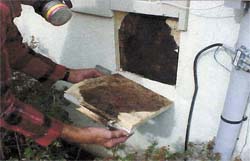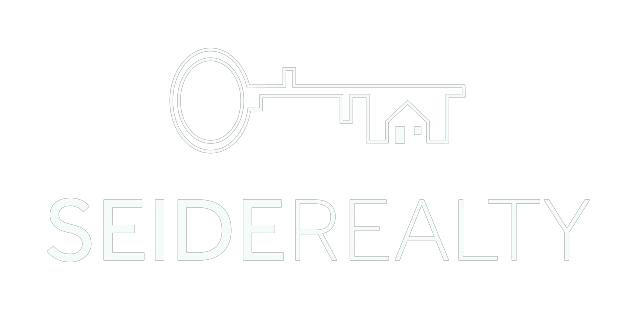originally posted on Coleen’s blog
http://haileplantationrealestate.com/category/gainesville-life/
What is Synthetic Stucco and Why Should You Care?
Traditional stucco is made with Portland cement. Synthetic stucco is polymer based and often includes a layer of foam plastic insulation.

Many stucco homes, however, are not traditional stucco but are synthetic stucco, also known as EIFS.
What is EIFS? The simplest explanation I could find comes from an article about synthetic stucco on about.com:
“EIFS stands for Exterior Insulation and Finish Systems. The product is also called synthetic stucco, and refers to a multi-layered exterior finish that’s been used in European construction since shortly after World War II, when contractors found it to be a good repair choice for buildings damaged during the war. The majority of repairs to European buildings were to structures constructed of stone, concrete, brick, or other similar, durable materials.”
EIFS was introduced to the United States in 1969 by Dryvit Systems. Prized for its superior insulating properties, cost-effectiveness, and its ability to be designed into a variety of architectural styles, EIFS was primarily used on commercial buildings in the United States until the early 1980’s, when it was introduced into the residential building market.
In addition to Dryvit, EIFS manufacturers now include Acrocrete (BASF), Parex, and Sto.
Insulation and Barrier Systems
Synthetic stucco/EIFS was designed as a “barrier system,” meaning that its success is dependent upon no moisture ever getting into the building envelope. To remain completely moisture free, all construction steps have to be followed, all flashings have to be properly installed, all windows and doors have to be properly caulked, etc. According to the International Risk Management Institute Inc. (IRMI),
“the properties of the product that make it a good insulator (designed to keep air from moving from the inside to the outside) also make it a poor drainer/ventilator (does not allow water that gets in to get back out).”
Water and Wood is a Bad Combination

Mold behind EIFS on wood sheathing - photo courtesy of Dennis Rose, Exterior Design Institute
Problems surfaced in the residential market with synthetic stucco/EIFS because, unlike commercial buildings, residential homes are not framed out with concrete or steel. Instead the synthetic stucco/EIFS cladding is generally applied over plywood framing, and moisture intrusion combined with plywood do not a very healthy pair make. Adverse effects of moisture intrusion into a synthetic stucco home can include accumulation of moisture in the wall cavity, structural damage, mold growth, and termite or carpenter ant infestation.
In the mid-1990’s, 209 EIFS homes in Wilmington, NC were discovered to have chronic moisture problems, resulting in serious mold and structural issues. According to an article on EIFS by Florida Master Home Inspectors,
“the damage was caused by poor construction detailing and practices; principally, the omission or proper installation of flashing in violation of minimum standards of construction set forth in building codes.”
Lawsuits were filed and the EIFS manufacturer, Dryvit Systems, settled with the homeowners. Similar problems with synthetic stucco/EIFS have been reported in Canada as well as throughout the United States including Alabama, Colorado, Florida, Georgia, Illinois, Indiana, Kentucky, Louisiana, Maryland, Massachusetts, Michigan, Mississippi, Missouri, New Jersey, New York, North Dakota, Ohio, Oregon, Pennsylvania, South Carolina, Tennessee, Texas, Utah, Virginia, and Washington.
Draining away the Moisture
In 1997 drainable EIFS was introduced into the market by EIFS manufacturers. Drainable EIFS systems give moisture that gets behind the cladding a way to escape, greatly lessening the potential for structural and mold problems in synthetic stucco homes.
Several states have outlawed non-drainable EIFS for home building, including North Carolina, New Jersey, and Oregon.
Despite the introduction of drainable EIFS, many builders continue to use the barrier system type of EIFS. According to Florida Master Home Inspectors, it is estimated that 95% of synthetic stucco homes in the United States are of the barrier EIFS variety.
“From an insurance standpoint, finding coverage for homes built using EIFS can be quite difficult. The product is highly susceptible to moisture and if not properly maintained, homeowners could find themselves with mold issues, which is the primary area of concern for insurance providers,” says Bryan Williams, an insurance advisor with McGriff-Williams Insurance in Gainesville.
Synthetic stucco homes – Tips for homeowners
Like any other type of home, regular inspection and maintenance of synthetic stucco homes is necessary to protect your investment and to help prevent problems.
There doesn’t seem to be any good way to visibly tell if there are moisture intrusion problems with a synthetic stucco home. By the time there are outward signs indicating moisture intrusion behind EIFS cladding, the damage can be significant.
A thorough inspection of the home’s exterior by a structural engineer or certified EIFS inspector will help the homeowner to determine which type of EIFS system is used on the home, whether there are currently water intrusion problems, and what steps homeowners should take to maintain their home.
The Exterior Design Institute maintains a list of qualified EIFS inspectors by state. at www.exterior-design-inst.com. According to its website,
“The Exterior Design Institute is a non-profit organization founded for the purpose of training and certifying Building Envelope and EIFS Inspectors and Moisture Analysts to promote quality control within the construction industry.”
Repairs to synthetic stucco homes should be performed by contractors well-versed in the use, maintenance, and application of EIFS.
“Reliable contractors have training certificates or qualification certificates from major EIFS manufacturers. Reliable contractors may also hold an EIFSmart certification from AWCI,” says Dennis Rose, a certified EIFS inspector from Ocala and an EIFS Instructor with the Exterior Design Institute.
The EIFSmart contractors national registry lists contractors by state.
Synthetic stucco homes – Tips for homebuyers
Gary W. Jackson, a North Carolina attorney who deals with cases involving construction defects, suggested the following tips for homebuyers considering the purchase of a synthetic stucco home in a 2004 article in REALTOR ® Magazine:
Insist on obtaining all relevant, available information about a stucco home from the seller: o Is the system traditional stucco or is it EIFS? o Have repairs been performed? o Have moisture readings or other inspections been conducted? Obtain an EIFS inspection on the home (in addition to a regular home inspection).
Want to Know More?
More information on homes built with synthetic stucco/EIFS can be obtained by contacting the National Association of Home Builders Research Center at 800-898-2842.
Many thanks to Bryan Williams at McGriff-Williams Insurance (352.371.7977) and Dennis Rose at the Exterior Design Institute (352-629-0837) for contributing to this article.
NOTE to readers: I am not an expert in construction or synthetic stucco or EIFS. This article is a review of industry literature on the topic of synthetic stucco/EIFS homes. Questions about synthetic stucco/EIFS homes should be directed to an industry professional, which is, I repeat, not me.

Great write up Coleen. I deal with confused homeowners on a daily basis that have zero understanding of EIFS cladding and it’s potential issues.
Check out the MoistureFree warranty. It’s another way to ease buyers fears, insure repairs are completed properly, and cover against moisture intrusion. Feel free to email me if you’d like to discuss anything EIFS!